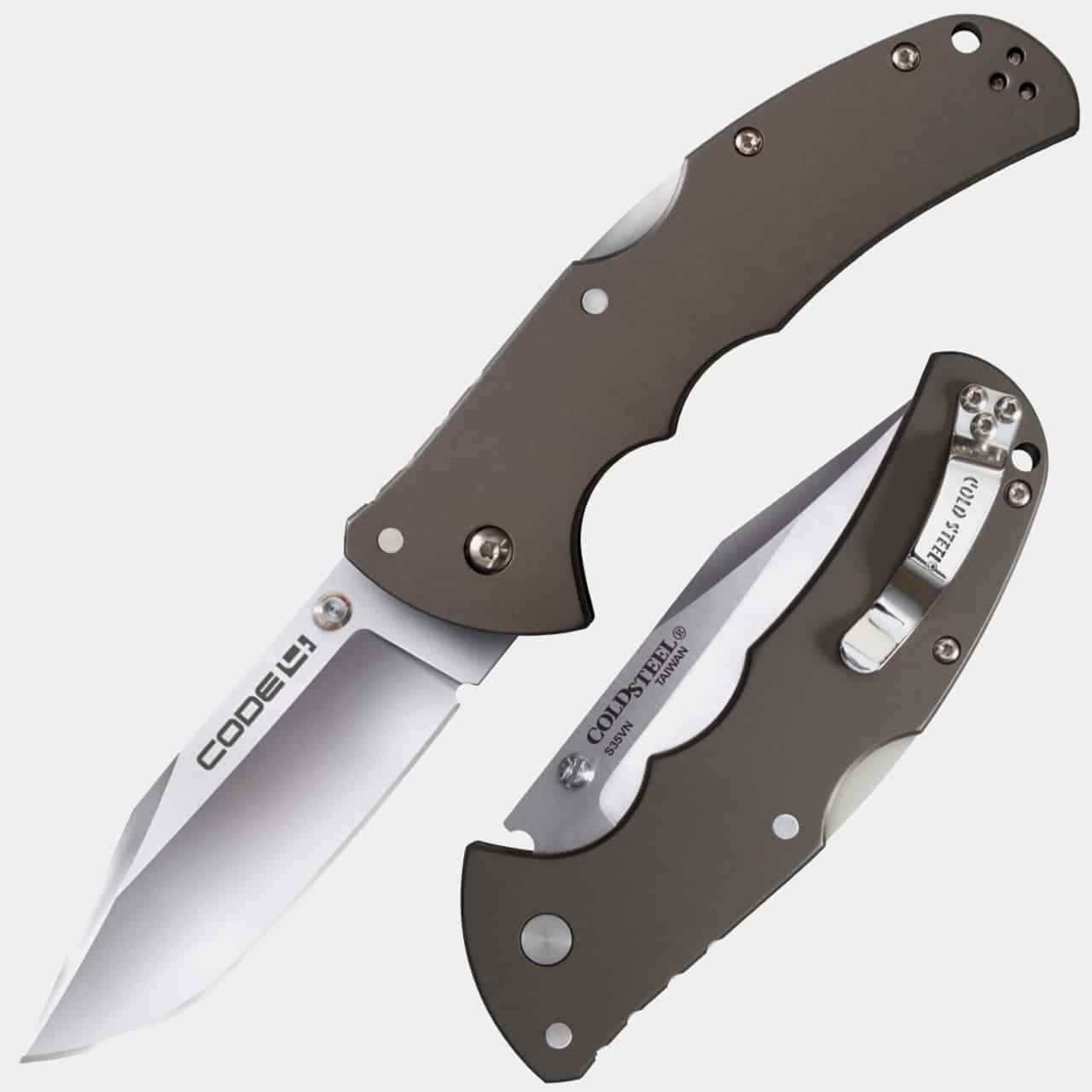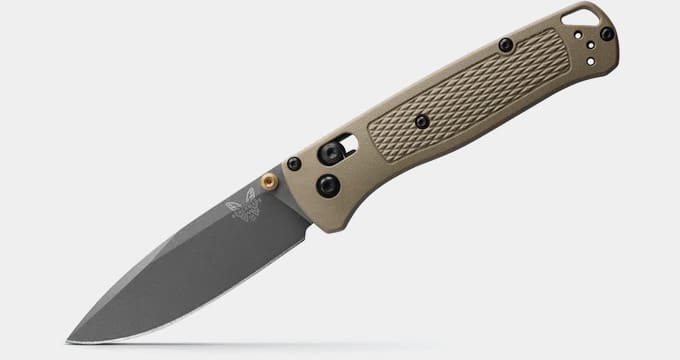Understanding Folding Knife Lock Types
August 19th, 2024
9 minute read
Editor’s Note: Knife laws vary widely between states, in terms of restrictions on deployment, blade length, and a variety of other factors. Our readers are suggested to educate themselves on all applicable state and local laws to choose an EDC knife legally permissible in their area.
It’s very likely that 50 years ago your grandfather carried a pocketknife. History has a funny way of repeating itself, and we’re currently having quite the moment for “EDC,” or “every day carry.” Somewhere between a lifestyle choice and product descriptor, I’d describe the EDC movement as a general ethos that involves thinking critically about what would be handy to have on one’s person throughout the day, both for common tasks and for those moments that — while improbable and infrequent — may have vital ramifications on one’s health and longevity. Many of us now understand what our grandfathers knew long ago: a knife is an extremely valuable thing to carry!
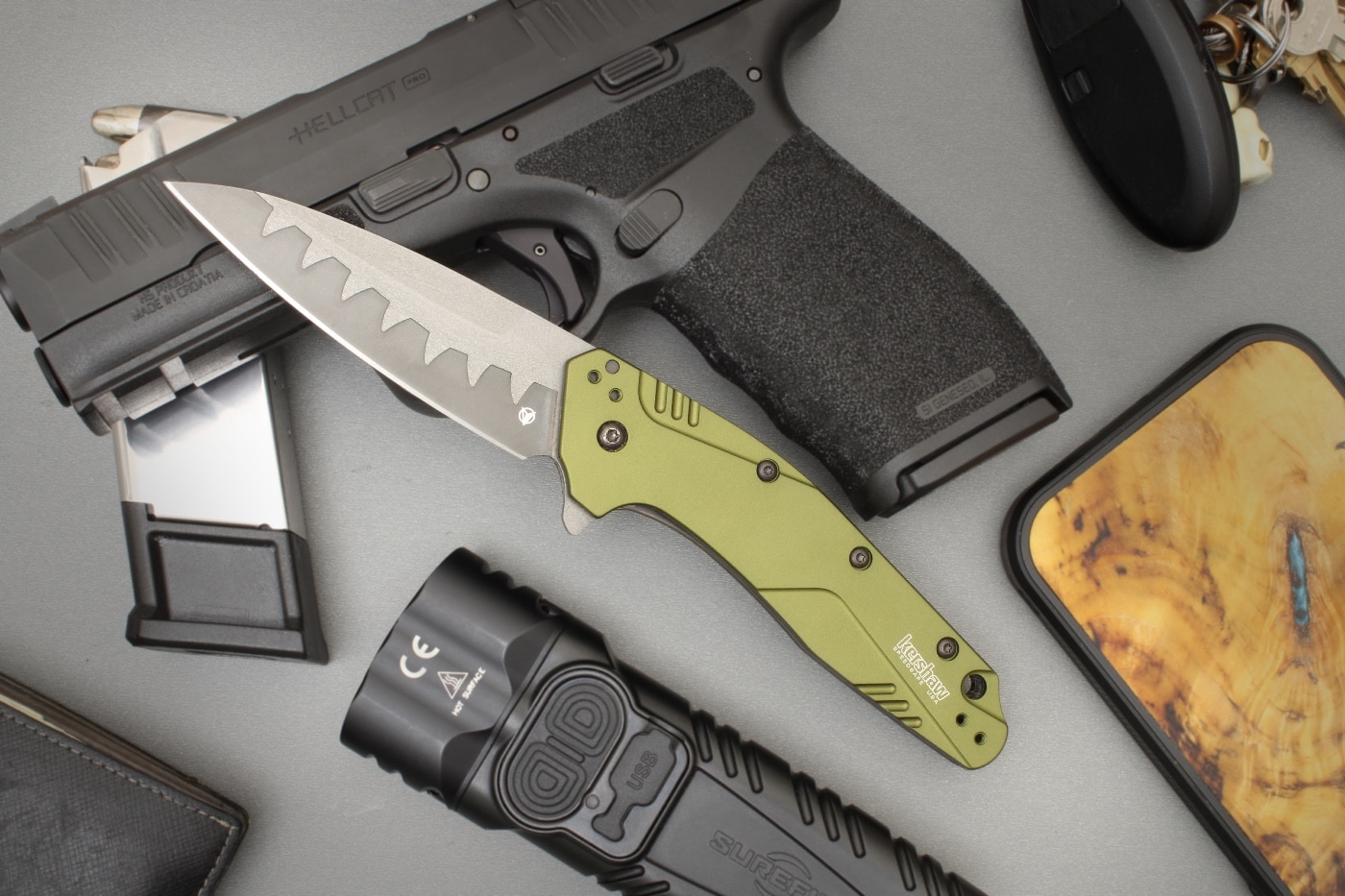
The knife market of today, however, is vastly different than what our grandfathers encountered in days gone by. Consumers who want a folding pocketknife are spoiled for choices, and the options can seem overwhelming. Today, let’s focus on one differentiation point that has outsized importance in both form and function: the locking mechanism. Understanding the nuances of how a folder is designed to stay open will undoubtedly help a new buyer choose a knife that suits their needs.
The Slipjoint
Ironically, to understand the importance of a lock, we should first consider that class of knife with no locking mechanism at all. Admittedly, the pocketknives of our grandfathers were almost always slipjoints, available in a variety of configurations, from the single-bladed Texas toothpick to the multiple-bladed congress and stockman knives. The venerable Swiss Army Knife is another slipjoint design.
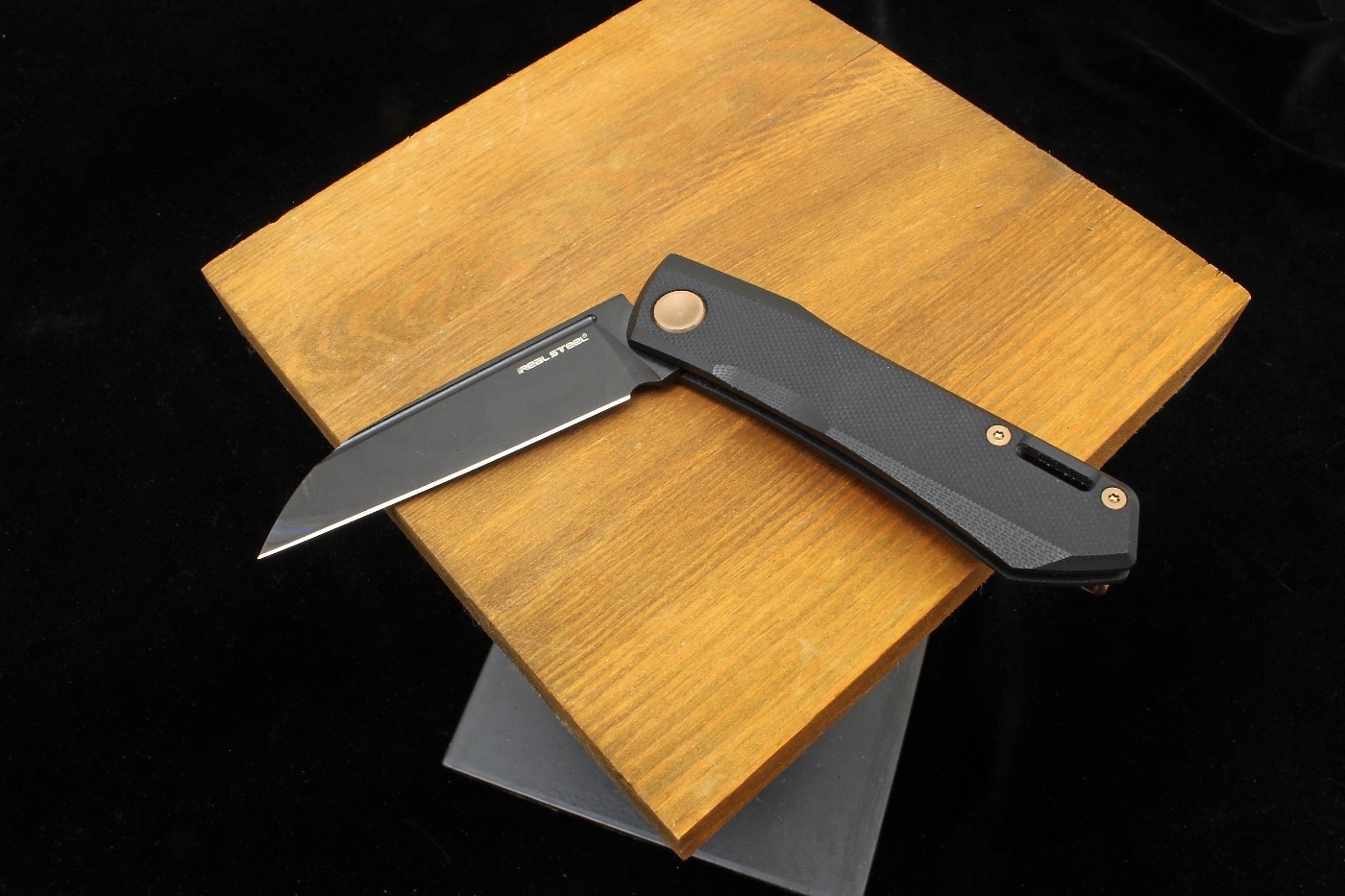
On nearly every slipjoint, the only thing keeping the blade open is spring tension. Once a job is finished, the blade can be pushed closed by putting pressure on the spine. While this makes for notable ease of use, it also means that slipjoints should be typically relegated to smaller household tasks that don’t require a tremendous degree of force, as relatively little is preventing the blade from closing on your finger.
As a result, a lock is a must-have for just about any serious task, and especially for any knife the user may think of pressing into a defensive role, however unlikely.
The Liner Lock
Today, the liner lock has become just about the industry default for an effective, no-frills locking mechanism. A liner lock works by wedging itself just behind the base of the blade as it enters the full open position. It is held in place by basic friction and prevents the blade from shutting. The mechanism is simple and ingenious, and as a result, most designs built around a liner lock tend to be extremely affordable.
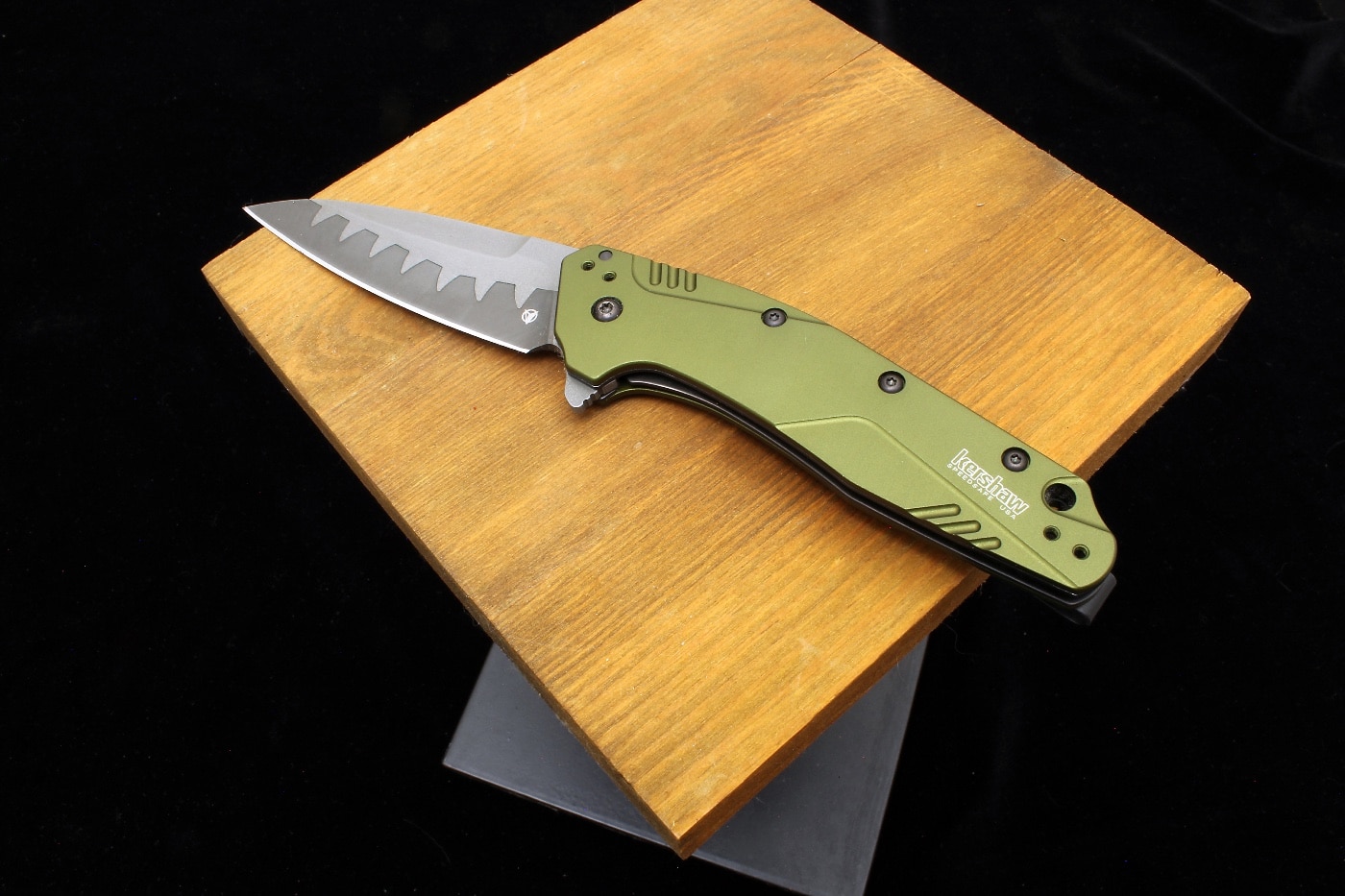
There are, however, some limitations. Under extremely hard use, there is a possibility for the liner to bend or break, and depending on the quality of the lock engagement, the liner can be knocked out of position by impact or vibration. Disengaging the liner also requires one to put their digits in the path of the blade as it moves back into the body of the knife, though I find that in practical use even a “slipped” blade normally lands squarely (and harmlessly) into the middle of my thumbnail.
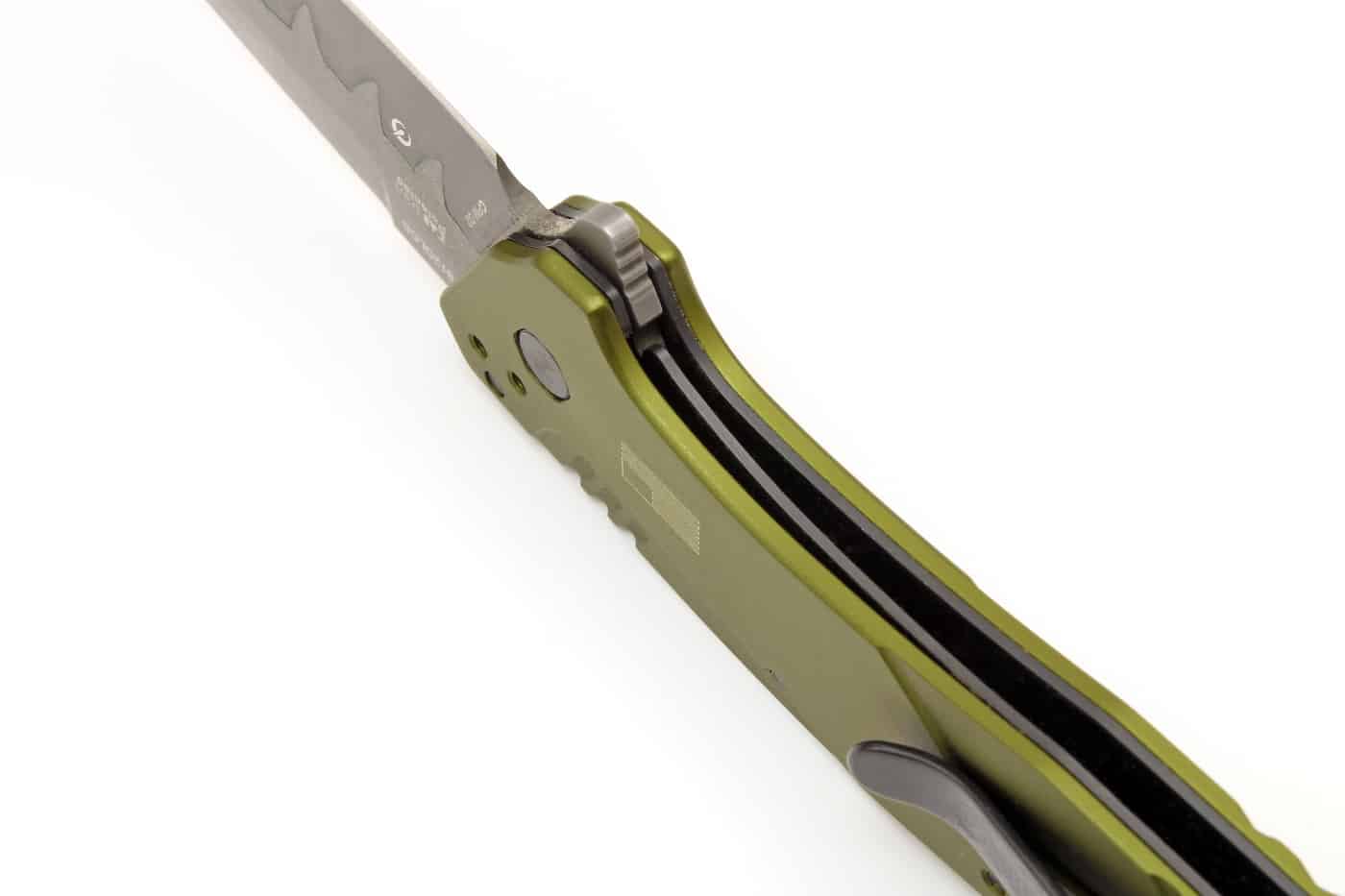
Quality liner locks abound in the market, and are eminently suited to 98% of cutting tasks. There’s also a world of difference in terms of the safety provided by a liner lock and the safety (or lack thereof) of a slip joint design for harder use or defensive scenarios. Still, the fact remains: other lock types are stronger.
The Frame Lock
The mechanism of the frame lock is nearly identical to the liner lock, but rather than a thin strip of metal engaging with the base of the blade, it’s a beefy chunk of material. Many of the concerns of strength and stability inherent to the liner lock are alleviated when the piece of metal doing the blocking has about 10 times more mass. This isn’t to say that frame locks can’t bend or fail — it’s just harder to get it to happen.
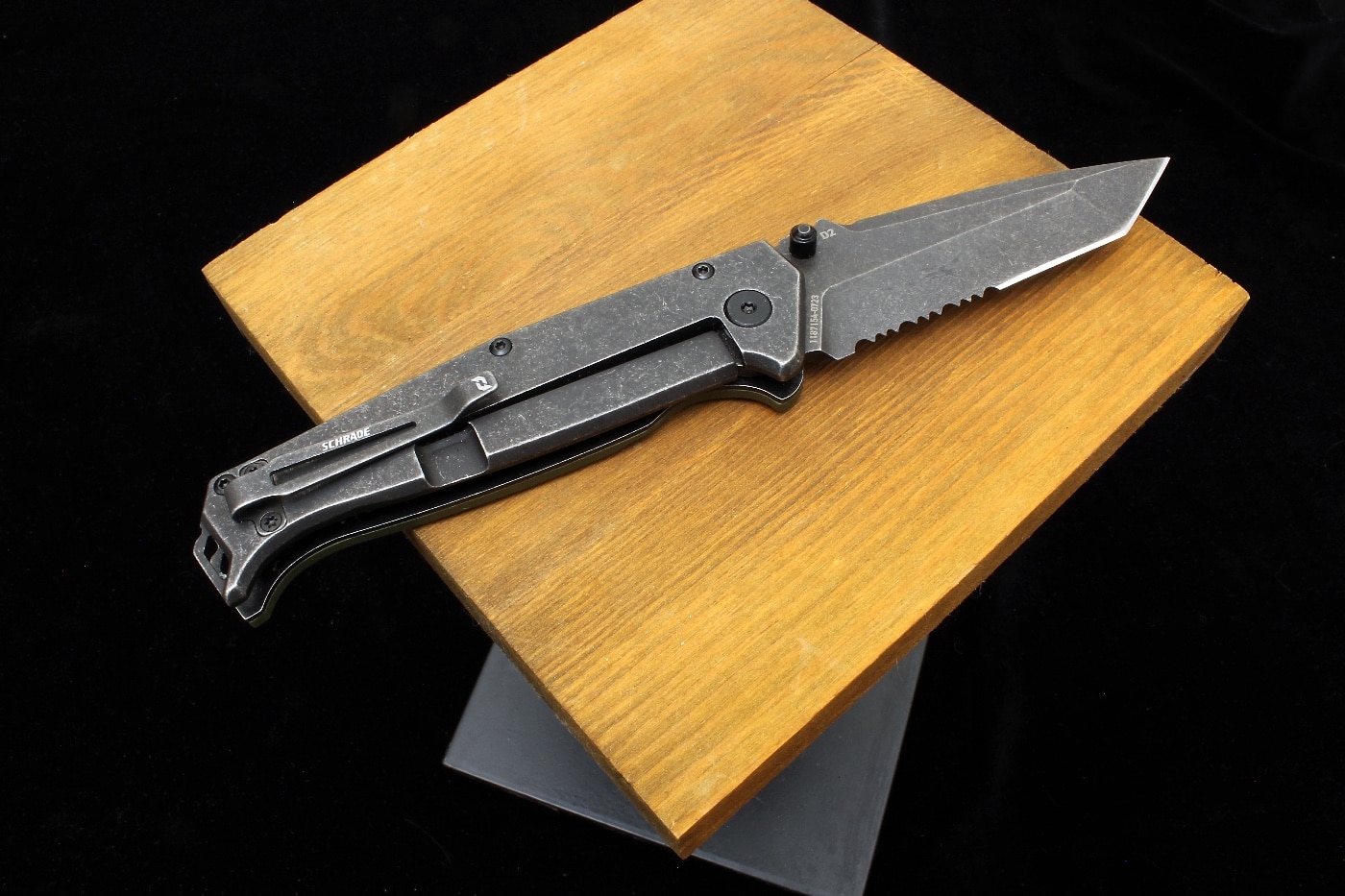
An additional benefit to the frame lock knife is that because the locking piece is often exposed, a firm grip pushes it more solidly into engagement, and one’s fingers prevent it from moving outward. On top of that, pushing inward on the frame can usually snug the engagement a little tighter if more peace of mind is desired.
The primary drawbacks of a frame lock go hand-in-hand with the additional mass of the lock bar: weight and cost. Although there are a great number of affordable and light frame locks, usually those knife frames made from stainless steel are going to be a little heavier, and those made from titanium are going to be a little more expensive.
And while the phenomenon can happen with liner locks, it’s far more often to encounter the issue of lock stick on a titanium frame lock. In such cases, the difference in the metals used for the frame and blade creates vastly more friction, requiring more force to disengage the lock. As such, one-handed opening may be easy, but one-handed closing could be another matter.
Back Locks
Back locks (alternately: “lockbacks”), popularized by the famous Buck 110, are almost universally regarded for their strength and simplicity. With most models, you’ll feel the spring tension as you open the knife, and the locking mechanism will click into place with comforting authority. The lock itself engages with the knife blade not unlike the couplers you’d find on railway carriages. Once it settles into the groove of the knife blade, the locking piece makes it all but impossible for the knife to rotate forward and close.
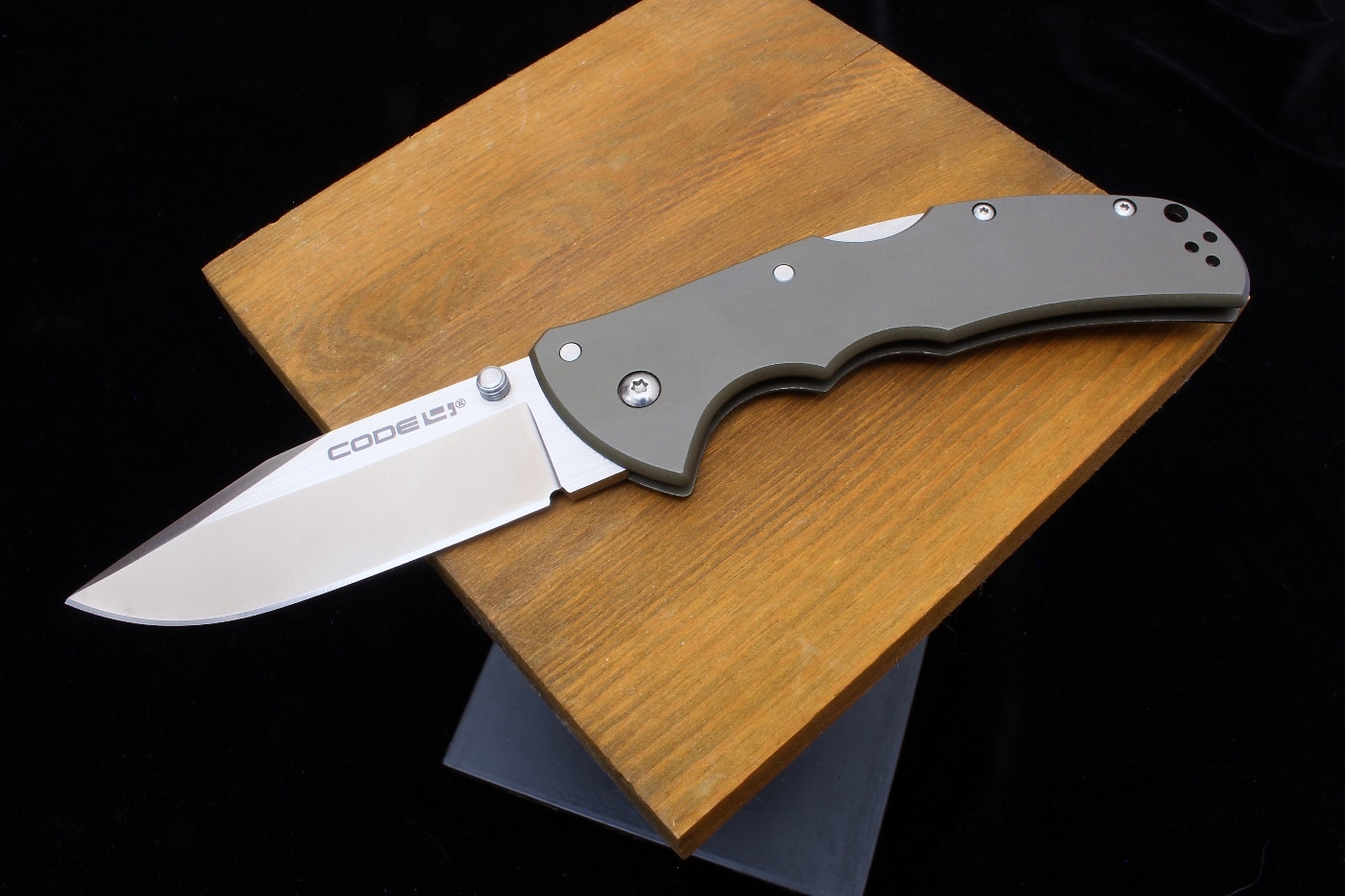
As a result, you’ll find back locks on a number of hard-use folding knives. Cold Steel, in particular, has developed a version of the back lock known as the Tri-AD lock that adds even more strength and rigidity thanks to an additional stop pin. Users who desire the strongest locking mechanism (and one that’s arguably the most difficult to unintentionally disengage) would be well-advised to consider a back lock design.
There is a drawback, however. No back lock in my collection has as smooth or trouble-free of an opening when compared to a knife of any other locking mechanism. Because the lock is always under positive and palpable spring tension, it’s pushing against the base of the knife blade throughout its arc of movement, requiring more engagement force. As a result, a one-handed opening either needs to be deliberately “slow-rolled” into lockup, or wrist-flicked into place with a decisive thwack.
Additionally, don’t be surprised if a new back lock knife arrives to you extremely stiff right out of the box. The interlocking metal surfaces of the blade and locking piece will eventually marry together, and small burrs and imperfections will work themselves out over time. However, as you begin to initially carry and use the knife, lock engagement and disengagement may feel like a small chore.
Crossbar Locks
Originally pioneered by Benchmade and called the Axis Lock, the company’s patent expired in 2018. Since then, the knife community has settled on “crossbar lock” to describe the generic form of Benchmade’s design. With the crossbar lock, a solid pin wedges itself over the base of the blade in the open position. In tandem with the stop pin, it prevents the knife from rotating forward or backward. The design is well-tested and extremely robust, typically edging out frame-locks in durability (read: torture) tests, but falling a little short of back lock designs.
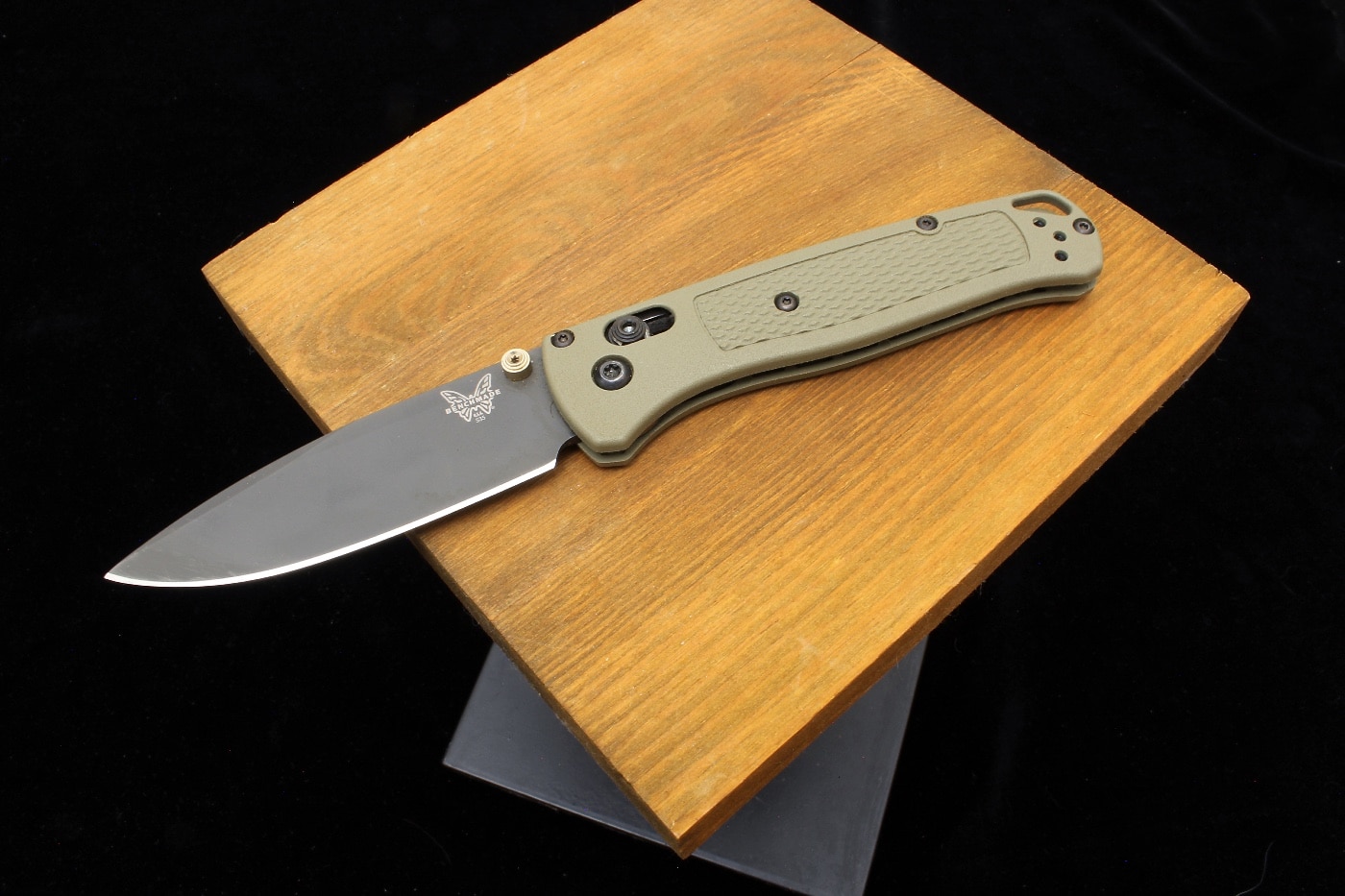
One of the primary benefits of the crossbar lock is practical safety: because the knife is closed with a “pinching” motion (one that works as well for lefties as right-handers), one’s digits can be kept well away from the blade edge as it rotates back into the handle.
Crossbar locks are also arguably one of the most “fidgety” of knife types. Though nearly every crossbar design will have a thumb stud or flipper as a primary means of deployment, savvy users often disengage the crossbar and flick the knife into opening through centripetal force. If you have a knife of this type on your desk, I guarantee you’ll find yourself flicking it open and closed — to the possible annoyance of anyone you live with.
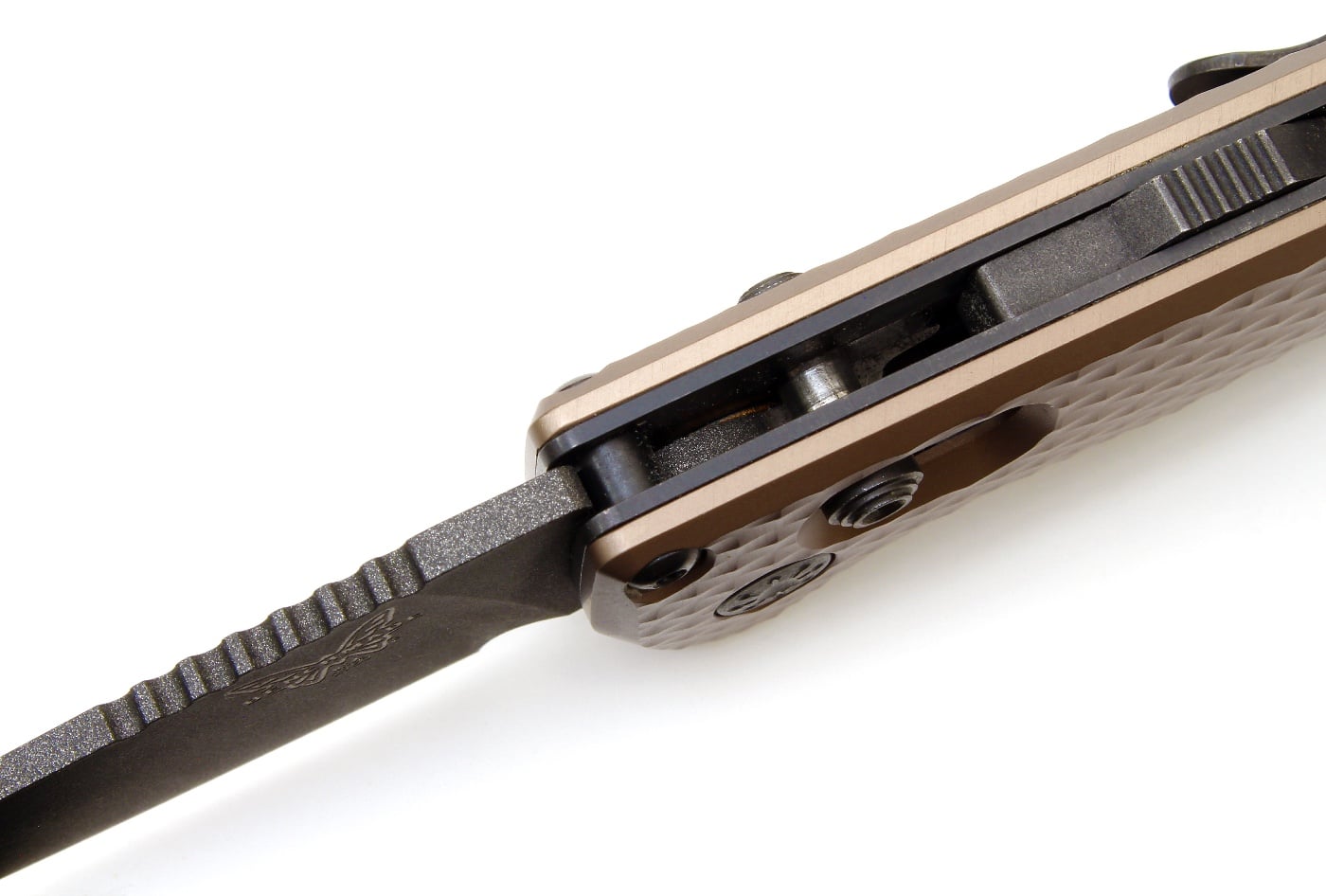
About the only drawbacks to the crossbar lock are slightly higher degrees of cost and complexity relative to other designs. Though Benchmade isn’t the only game in town offering crossbar locks, it’s still a feature you won’t find on too many budget knives. The design is more complicated than your typical liner lock, and often involves a dual spring setup on both sides of the frame. Users who either thrash the hell out of their knives (or those who are simply unlucky) have reported that the “omega” springs supporting the crossbar are a potential point of failure.
The Button Lock
If there’s one design that’s taken the knife world by storm in the last five years, it’s the manual button lock (alternately, the plunge lock). Typically, button locks were found mostly in automatic knives, where a push on the button would release a blade under spring tension. From there, the blade would lock into position at the end of its arc of travel as the plunger settled into a groove at its base. A number of companies, however, realized the design worked without the automatic component, and by pushing a button and snapping the wrist, the blade could be manually flicked into position just as easily.
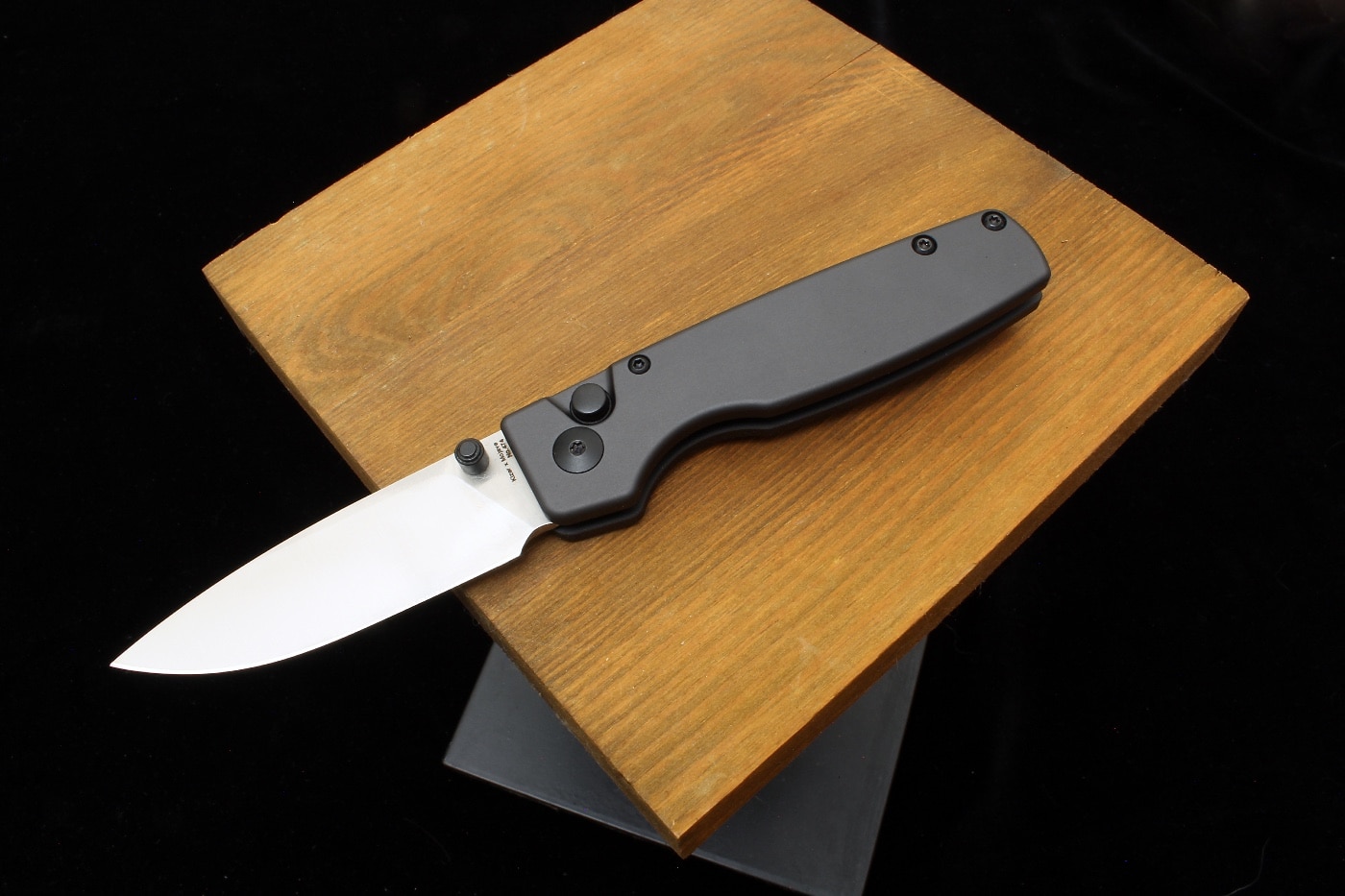
The fidget factor of a manual button lock knife, like crossbar designs, is out of this world. I also think they make extremely handy “around the house” and EDC knives: the deployment ease makes it a joy to open an envelope, cut down a box, or snip an errant thread. And, like crossbar locks, they allow for the knife to be unlocked without one’s fingers ever passing through the blade path. In a sub-3” knife, I think the designs are excellent.
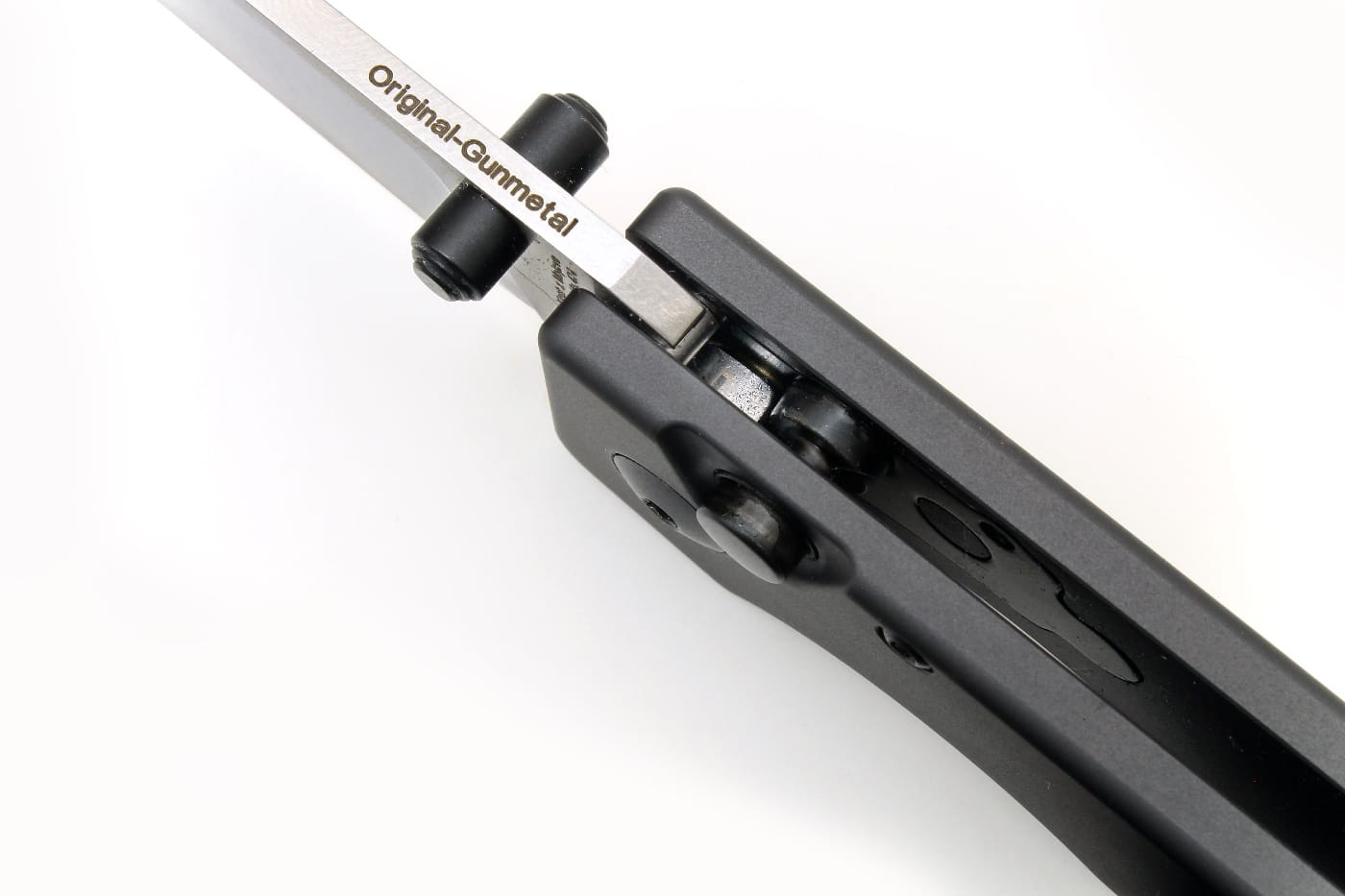
Where I’m less bullish on them is when they’re pressed into defensive roles or for hard use. Often, the buttons that open and close the knife are fairly prominent and easy to access. However, this also means these mechanisms can be more easily bumped or knocked against something accidentally. This is less of a concern on an automatic knife, as spring tension will continue to push the blade into the open position and against the force of gravity. On a manual button lock, however, an accidental button press may send the blade into the tops of your fingers at the worst of moments.
The Rest
This list is certainly not an exclusive list of all folding knife lock types — there are excellent company-specific locks, including Spyderco’s Compression Lock and Demko Knives’ Shark Lock — as well as a number of unusual and historical locking designs. 95% of all knives on the market, however, should fall easily into one of these categories.
The pocket folder has always been interesting to me because manufacturers have always been trying to build a better mousetrap, not only with materials, but in terms of strength and ease of operation. We also live in a time when there are a number of excellent knives across all manner of price points. I contend by knowing the pros and cons of these various locking systems, you’ll be better equipped to find a design that best meets your needs.
Editor’s Note: Be sure to check out The Armory Life Forum, where you can comment about our daily articles, as well as just talk guns and gear. Click the “Go To Forum Thread” link below to jump in!
Join the Discussion
Featured in this article
Continue Reading
Did you enjoy this article?

 72
72







